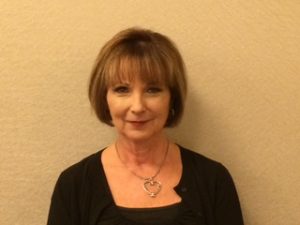How to Build Active Readers
 Recently I was teaching a demonstration lesson at Oakland University. I brought one of my students, Brandon (a pseudonym), who was among the lowest readers at the beginning of first grade. He had been in an intervention group all year with his first grade teacher and an additional group with me. Now in the spring, we were working one on one, as he still had not yet met grade-level standards.
Recently I was teaching a demonstration lesson at Oakland University. I brought one of my students, Brandon (a pseudonym), who was among the lowest readers at the beginning of first grade. He had been in an intervention group all year with his first grade teacher and an additional group with me. Now in the spring, we were working one on one, as he still had not yet met grade-level standards.
Brandon was right in the middle of reading a familiar text, The Clever Penguins, by Beverly Randell, when he suddenly stopped and said, “Wait, I think that the seal ate a lot of penguins. Do you know why? Look at his fat belly! And look.” He jabbed his finger repeatedly at an illustration. “I think he just kind of let her get away.”
At the time I was pleased that he was thinking so deeply about the story he was reading. However, I had no idea what my peers were thinking about Brandon’s responses to the text. Several came up during our break and inquired.
“How did he learn to talk that way about books?” someone asked me.
“Wow,” another said. “How did you get him to search and use evidence from text to support his thoughts? This is an intervention student!”
Their questions made me pause. Just how did I help Brandon and my other intervention students think that they should be asking questions every time they read?
Steps to Take
In the classic How to Read a Book, authors Mortimer Adler and Charles Van Doren remind us that as readers, it is our responsibility to be active and awake. That means it is our job to ask and answer questions while we read.
It is also the reader’s job to understand the structure of the text and to take notes in the margins. Additionally, it is not sufficient to read a text just once. We must reread it, and consider how it may link to other texts that we are reading.
So, how did Brandon learn to be an awake, active reader at the age of seven?
When working with intervention students, it is critical to build up their background knowledge of a variety of text types, literary structures, and vocabulary, and to do so using rigorous but engaging picture books in an interactive reading format.
A few steps to remember:
- It’s paramount to intentionally teach conversation moves that help students grow their thinking about books; this should be done in a community of learners.
- It’s also important to read and reread, in order to find evidence in the text to support one’s thinking.
- Students move into reading their own books in a guided reading format, using leveled texts.
- During one-on-one conferences, the teacher assists students to transfer their learning from the read-aloud setting to their own reading.
- Along with learning word-solving skills, meaning now becomes an equally important tool that enables students to accelerate their literacy progress.
Bringing It All Together
So if asked again, “Why did Brandon approach the reading of what seems like a simple text with his questions and deep thoughts?” my answer would be:
- If you include quality literature with opportunities for students to build their background knowledge, including selections linked to the classroom units of study, then students can connect the dots to see how their learning links up and can be used between intervention and classrooms–which indicates transfer of learning has taken place.
- You will soon hear your students talk the way Brandon did, every time they read.
- And you just might also hear, “I LOVE this book! Can I take this one home? Do you have any more like this one?”
My school year is complete, as many of my students are now engaged, active, grade-level readers.
Lynn and her co-presenter Christine Miller will be presenting on the topic “Intentional Teaching = Accelerated Learning” at the Oakland Schools Effective Practices Conference, on June 20 at Bloomfield Hills High School.

Lynn Mangold Newmyer has been an educator for 42 years. She is a Reading Recovery Teacher Leader and an Elementary Literacy Coach in the Walled Lake Consolidated School district. Lynn has presented at state, national, and international conferences and has taught graduate classes at Oakland University. She currently teaches her students at Loon Lake Elementary. Lynn emphatically believes that you can never own too many picture books. You can follow her on Twitter at @LynnRdgtch.
Notes from the Classroom